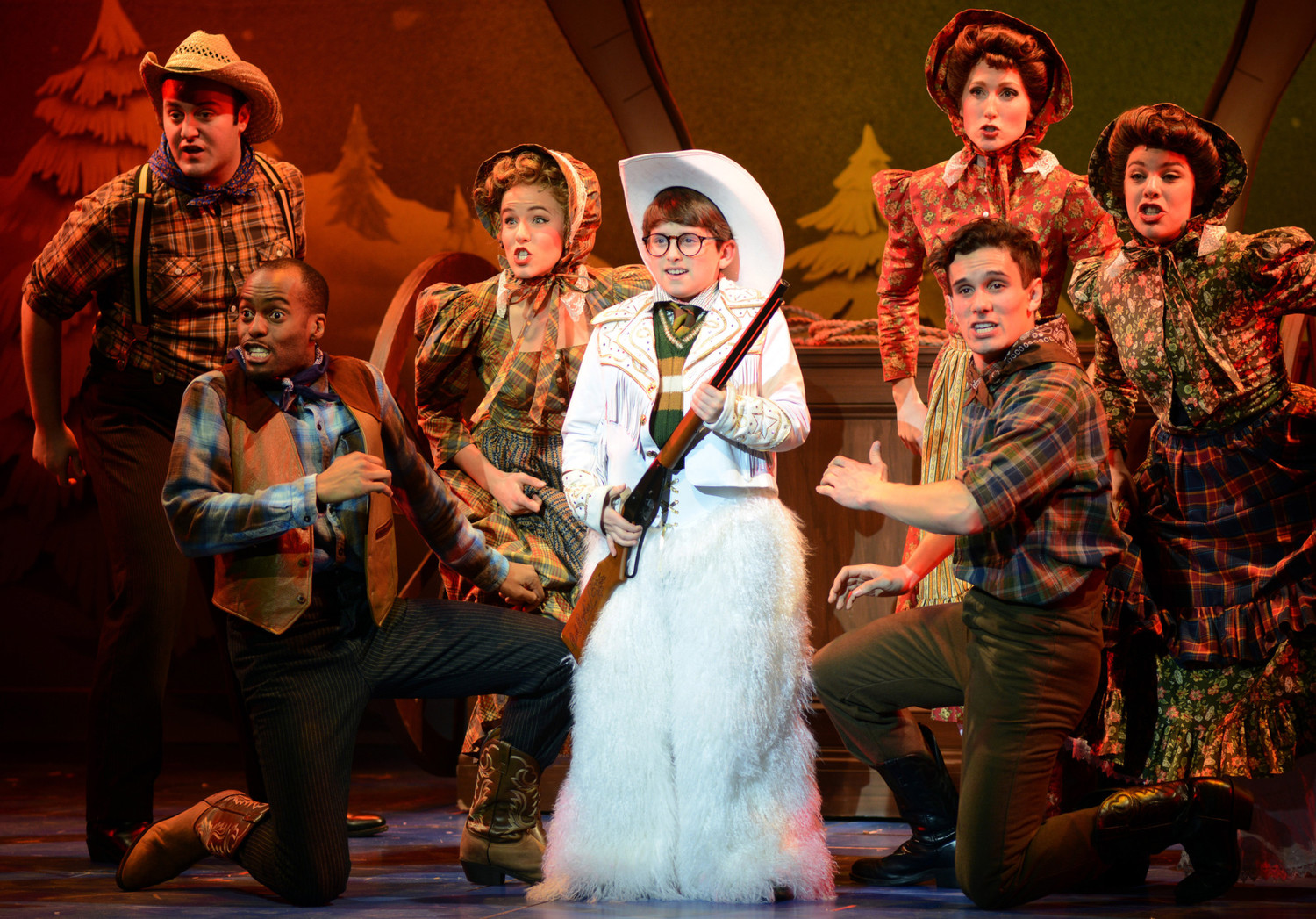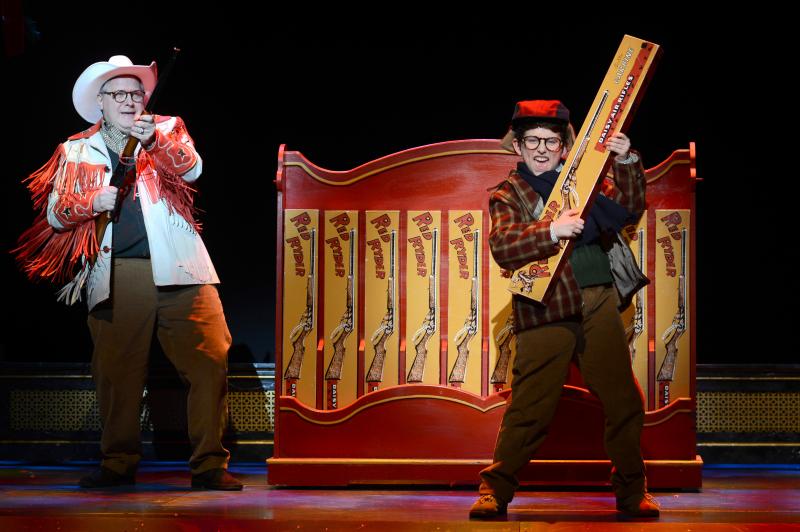Review: A Catchphrase Becomes a Musical Mantra in A CHRISTMAS STORY

Long before it became New York's AM haven for Rush Limbaugh and Sean Hannity, WOR was the latenight hangout of Jean Shepherd, the place where he became something of a cult hero - or maybe a folk hero if you take his roguish, Bohemian homespun manner into account. His holiday idyll, A Christmas Story, recalling his boyhood in an obscure Indiana town, is the chief reason why we remember Shepherd. It's likely also the reason why 1938 Red Ryder Carbine Action BB Guns are still available at Walmart, Bass Pro Shops, and Dick's Sporting Goods more than 50 years after the last Red Ryder comic strip appeared in print.
Aside from the fabled Red Ryder air rifle - and the extra trimmings our hero Ralphie never fails to mention - there's another familiar earmark in A Christmas Story. Whether he expresses his yearning obliquely through a magazine ad strategically placed in his living room, excitedly in front of a store display, panegyrically in a school essay, or confidentially in Santa's lap, the barrier to Ralphie's Holy Grail is always the same: "You'll shoot your eye out!"
As your might fear, for the phrase is already sufficiently repeated, A CHRISTMAS STORY, THE MUSICAL turns the catchphrase into a pervasive mantra - a phantasmagorical one partway into Act 2 after (Miss) Shields, Ralphie's teacher, reacts to his essay. Transported to a fantasy speakeasy, even Ralphie's classmates pronounce the fatal slogan in mocking singsong, fiendishly relishing our hero's failure to get what he so dearly cherishes.

We'd be fine if this expansion were the worst of Joseph Robinette's mistakes in adapting the 1983 Turner Entertainment film for the stage. Years after Oliver and Annie had proven a pre-teen's ability to carry his or her weight in a Broadway musical - and less than two years before Matilda would prove it again - Robinette looks to narrator Jean, Ralphie's parents, and (Miss) Shields for avenues to expand his book or let composers Benj Pasek and Justin Paul plump up the songlist.
You might retch at all the geniality that Chris Carsten lavishes on Jean, but it's an enthusiastic heartland geniality, and he isn't singing much. We can also allow that the epic stress that Lauren Kent as (Miss) Shields puts on the "You'll Shoot Your Eye Out" prohibition siphons away some the ogre aspect that might taint Ralphie's mom. But that strands Briana Gantsweg as Mother in the deadly realm of being almost entirely understanding and nurturing, toward her husband and her sons - in two of Pasek & Paul's most sweetly innocuous songs. They stop the show in ways that aren't helpful.
Most of the true joy that beams out at us at Ovens Auditorium in this show comes from Ian Shaw as the ever-embattled, ever-tenacious Ralphie (alternating with Michael Norman) and Paul Nobrega as The Old Man, a similarly-assailed eccentric who barely takes notice of his pintsize buckaroo's numerous tribulations. Largely ignoring Ralphie, The Old Man's Herculean challenges include taming the furnace, eluding the next-door neighbor's dogs, and winning recognition in a very silly crossword puzzle contest.
With Pasek & Paul rising to the occasion, perhaps the best musical moments in the show are songs inspired by The Old Man, "The Genius on Cleveland Street" and "A Major Award." Nobrega's struggles with the crossword puzzle also give Gantswag her best moments, striving to feed the answers to her intensely dimwitted husband without defiling his self-esteem.
Starting out with Shepherd taking us to his WOR studio A CHRISTMAS STORY, THE MUSICAL takes its time before reaching cruising gear. But times were slower in 1940, when Robinette sets the story, and set designer Walt Spangler and costume designer Elizabeth Hope Clancy create a folksy, slightly cartoonish charm that chimes well with this familiar yarn, which will warm your holiday a little if you're patient. Playing time, 1:54, is 21 minutes more than the movie, so nobody's in a rush.
Photo by Gary Emord Netzley
Videos
